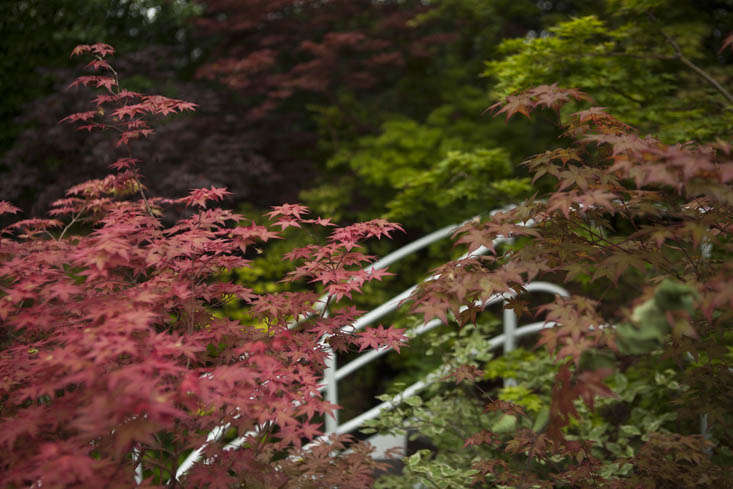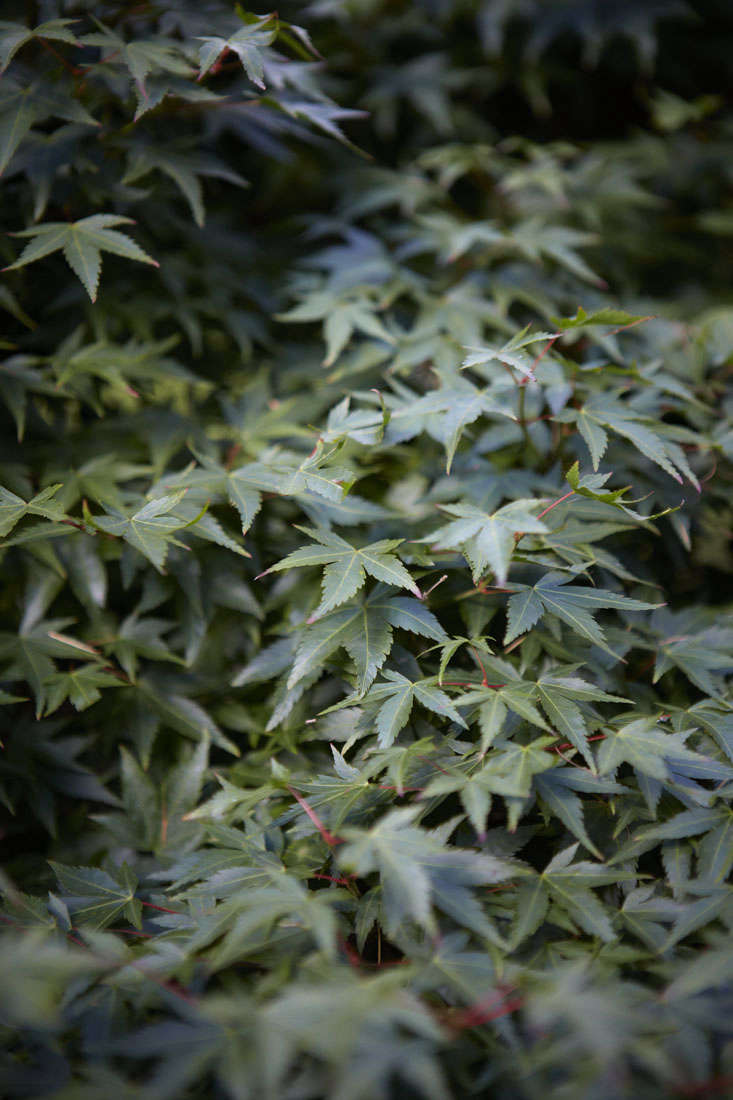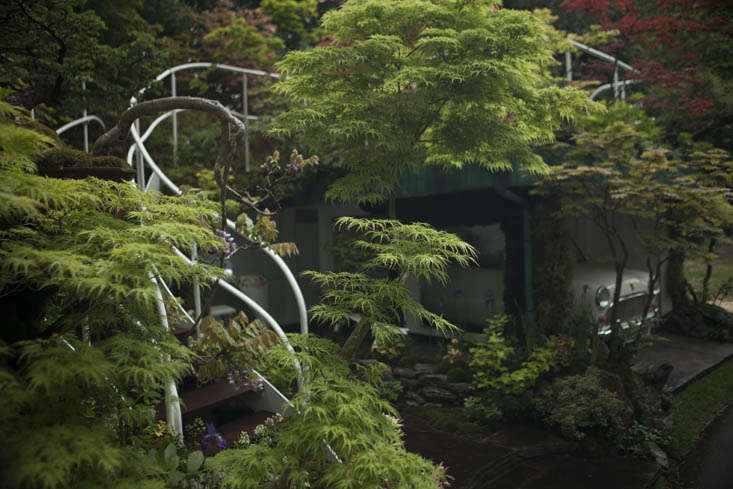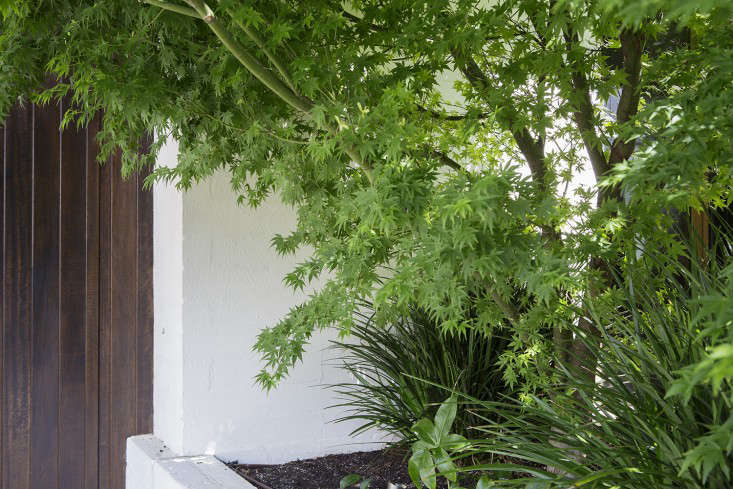Japanese Maple, Acer palmatum: “Raises the Tone”
The dark branches and finely traced leaves of Acer palmatum give an air of distinction to a garden or courtyard, without being high maintenance. Give it light and moisture in a cool temperate climate and it will grow into something resembling a large bonsai, no tweezers (or any pruning) required.
Above: Japanese maple in a Japanese garden, that of Kazuyuki Ishihara, at the 2016 Chelsea Flower Show. Red, green, and variegated leaves can be mixed to great effect, as a collection. Photograph by Jim Powell.
Above: Serrated leaves and colored stems are just one combination in this fascinating tree. Photograph by Britt Willoughby Dyer.
Above: Japanese maple is slow-growing, with eventual height anything between 4 and 25 feet, depending on the variety. It can be wider than it is tall; when Japanese maple begins to flame in autumn, it is unmissable.
The curving trunks of Acer palmataum perfectly complement the spiraling staircase over this garage garden. For more, see Designer Visit: Mr Ishihara’s Divine Chelsea Garden.
Above: The branches of Acer palmatum, left to grow in whatever direction they choose, are as beautifully shaped as the leaves. Photograph by Kendra Wilson.
Above: Leaves are palmately lobed, making it easier to remember the Latin name of Acer palmatum. Radiating from a central axis, the leaf lobes vary in their narrowness. Shown here: ‘Oshio Beni’. Photograph by Jean-Pol Grandmont via Wikimedia.
Cheat Sheet
- The shape of Japanese maple is distinctive in every aspect, i.e. its leaves, stems, trunks, and very individual overall shape.
- Smaller Japanese maple is an excellent choice for a raised bed or large pot (its roots may need to be protected by wrapping the pot in winter).
- Autumn color is one of the main attractions with Japanese maple. Dappled sun is ideal; the leaves need light, but not too much.
Above: Japanese maple is such good value all year round that it deserves a place next to the door, or by a window. In a tight space, a small specimen provides structure, texture, and shape. For more, see: Designer Visit: A Courtyard to Covet in a Modern Melbourne Garden. Photograph courtesy of Grounded Gardens.
Keep It Alive
- Japanese maple exudes an aura of calm and will only thrive in a sheltered spot.
- Allow it to express itself by not crowding it with an understory of plants (the shallow fibrous roots prefer not to be disturbed).
- Soil should be well-drained but moist; some acidity is good.
Above: In an urban backyard, every leaf counts: make sure they are interesting leaves. In this garden, Acer palmatum is repeated by the house. When the leaves are gone, their elegantly twisting trunks come to the fore. See them at ground level: Landscape Architect Visit: Scott Lewis Turns a Small SF Backyard Into an Urban Oasis.
Above: Although Acer palmatum is an uncomparable tree for small spaces, it is also a wonderful choice as a single specimen on a larger property. Photograph by Britt Willoughby Dyer.
For more growing tips, see Japanese Maple Trees: A Field Guide to Planting, Care & Design.
Trying to choose a tree for your garden? See our Trees Design Guide 101, including Hawthorn Trees 101, Birch Trees 101, and Copper Beech Trees 101.
















Have a Question or Comment About This Post?
Join the conversation